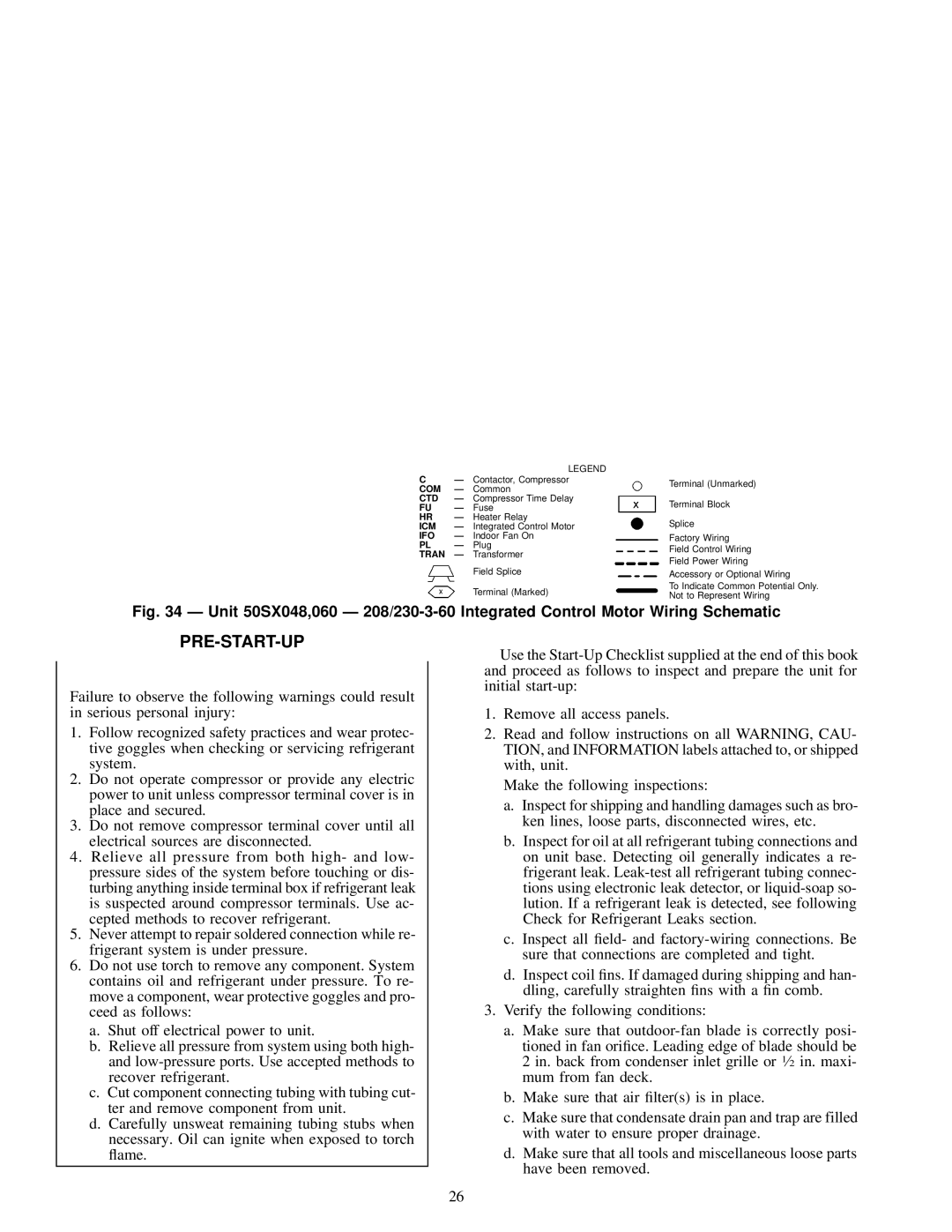
LEGEND
CÐ Contactor, Compressor COM Ð Common
CTD | Ð | Compressor Time Delay |
FU | Ð | Fuse |
HR | Ð | Heater Relay |
ICM | Ð | Integrated Control Motor |
IFO | Ð | Indoor Fan On |
PL | Ð | Plug |
TRAN | Ð | Transformer |
|
| Field Splice |
|
| Terminal (Marked) |
Terminal (Unmarked)
Terminal Block
Splice
Factory Wiring Field Control Wiring Field Power Wiring Accessory or Optional Wiring
To Indicate Common Potential Only. Not to Represent Wiring
Fig. 34 Ð Unit 50SX048,060 Ð 208/230-3-60 Integrated Control Motor Wiring Schematic
PRE-START-UP
Failure to observe the following warnings could result in serious personal injury:
1.Follow recognized safety practices and wear protec- tive goggles when checking or servicing refrigerant system.
2.Do not operate compressor or provide any electric power to unit unless compressor terminal cover is in place and secured.
3.Do not remove compressor terminal cover until all electrical sources are disconnected.
4.Relieve all pressure from both high- and low- pressure sides of the system before touching or dis- turbing anything inside terminal box if refrigerant leak is suspected around compressor terminals. Use ac- cepted methods to recover refrigerant.
5.Never attempt to repair soldered connection while re- frigerant system is under pressure.
6.Do not use torch to remove any component. System contains oil and refrigerant under pressure. To re- move a component, wear protective goggles and pro- ceed as follows:
a.Shut off electrical power to unit.
b.Relieve all pressure from system using both high- and
c.Cut component connecting tubing with tubing cut- ter and remove component from unit.
d.Carefully unsweat remaining tubing stubs when necessary. Oil can ignite when exposed to torch ¯ame.
Use the
1.Remove all access panels.
2.Read and follow instructions on all WARNING, CAU- TION, and INFORMATION labels attached to, or shipped with, unit.
Make the following inspections:
a.Inspect for shipping and handling damages such as bro- ken lines, loose parts, disconnected wires, etc.
b.Inspect for oil at all refrigerant tubing connections and on unit base. Detecting oil generally indicates a re- frigerant leak.
c.Inspect all ®eld- and
d.Inspect coil ®ns. If damaged during shipping and han- dling, carefully straighten ®ns with a ®n comb.
3.Verify the following conditions:
a.Make sure that
b.Make sure that air ®lter(s) is in place.
c.Make sure that condensate drain pan and trap are filled with water to ensure proper drainage.
d.Make sure that all tools and miscellaneous loose parts have been removed.
26
